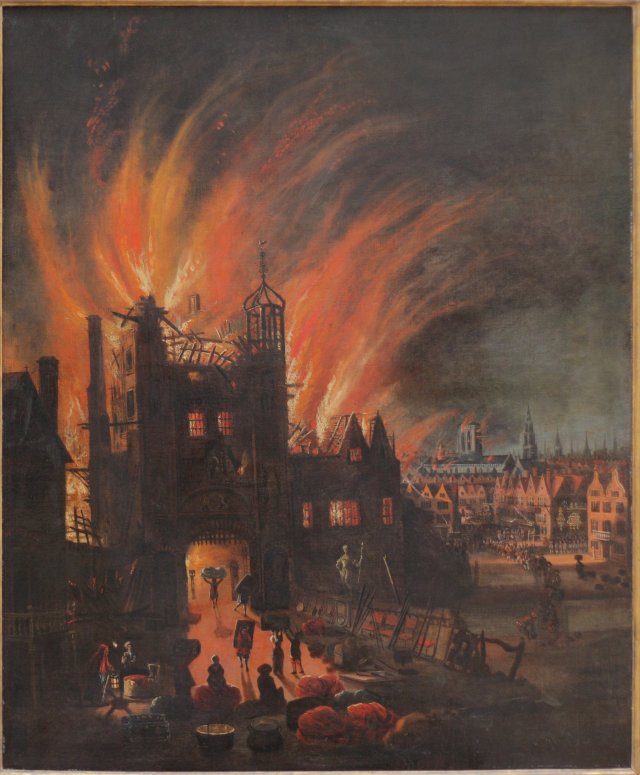In the 17th century, London was a very large medieval city, one of the major cities in Europe. Houses were made of wood and there were lots of timber buildings. That was dangerously flammable so the fire didn’t take long to spread. On September 2nd, 1666, there was a great fire. It began in Pudding Lane. We think it began in the premises of a baker (Thomas Farynor), very early on the morning around one o’clock, maybe because of a candle, an oil lamp, a fireplace or ovens. It was surely a domestic accident. A servant woke up to find the house aflame, and the baker and his family escaped, but a fear-struck maid perished in the blaze. The city burnt for 4 or 5 days but some debris smouldered for many days afterwards. One of the consequences was a huge number of homeless people. Saint Paul’s Cathedral, 87 churches, between 13 and 14 000 houses and very many businesses had burnt. The fire didn’t spread to Southwark, on the other side of the river, because of the gap that had been caused by the fire of 1633.
The Great Fire Of London Camille Rousseau, Théo Bauin et Inês Rodrigues









